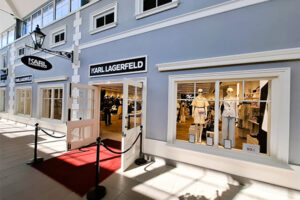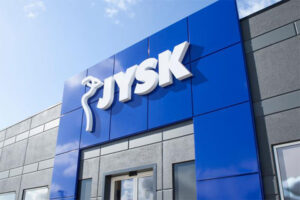By Moritz Felix Lück
Purchase prices for retail parks and hybrid malls have been at a high for years, and the end of this trend is not foreseeable. Nevertheless, retail parks remain an attractive asset class – regardless of whether they are high-priced new acquisitions or existing properties. That is primarily due to the fact that many opportunities to maintain the value of the properties still exist, and the potential for value enhancement is also considerable. The following five theses address these aspects and constitute the quintessence of a recently released publication on retail parks in Germany.
1. The Retail Park Asset Class Remains Worthwhile
The pressure on returns is noticeable at newly acquired and high-priced locations, and exactly when the low-interest phase will end remains unforeseeable. Nowadays, investors are critical of retail properties, particularly due to the fact that the effects of online trading are still difficult to gauge. The high proportion of local supply offers provided by retail parks and hybrids serves as an important stabilizing factor due to the low share of online sales, which investors value as much as stable cash flows. The asset class also remains interesting because it offers many reserves for value enhancement, from day-to-day operations to comprehensive refubishments.
The high demand of recent years has given the entire management and value creation of the retail park / hybrid asset class a major boost with regard to professionalism. This development encompasses, perhaps, the greatest potential that investors can exploit. Now, investors trade entire portfolios and, considering the aspects of a given portfolio, they should also be able to assume responsibility for the overall operational management. Generating synergies from individual properties has become increasingly difficult. Portfolios offer more opportunities to profit from volume structures, standardization, and efficiency reserves.
For example, economic potential still exists for operating costs, such as energy costs and facility management (FM) costs. Noticeable effects can be achieved on energy costs in cooperation with the corresponding specialists. A bundled purchase of energy for several retail parks helps to reduce costs. Savings of up to 20% can be realized.
2. The Range of Rental Tasks Has Become More Challenging
The most important characteristic of leasing today is the ability to keep an eye on the needs of all target groups and to align them with each other. There is much more at stake than simply leasing new space or re-leasing existing space. Keeping existing tenants at a property on a long-term basis has become increasingly important. Above all, it is a matter of carrying out the positioning and profile enhancement of each individual property within its competitive environment as part of an integrated product strategy that is meticulously geared toward clearly defined consumer groups. That is the most important strategic effort through which existing tenants can be retained and suitable new tenants won.
3. The Adaptation of Retail Parks is a Central Task
The general trends in retail development have also recently hit the retail park segment. The slumps or even bankruptcies of long-standing market players, such as Gerry Weber, Esprit, and Tom Tailor, have resulted in adjustments to floor space and the need for re-leasing. Over the past few years, product pressure has increased as a result of increased rental space, but today, the focus often lies on the recovery of space productivity through the optimization of rental space. The task of active retail space management is to respond to tenants’ requirements by adapting both the layout of the space as well as the tenant mix. Apart from large-scale refurbishments of entire properties, these adjustments represent an ongoing task in order to constantly maintain a high level of success for the retail properties concerned.
Consumer demands also have to be met. Until recently, increased demands made by consumers with regard to design, product presentation, quality of stay, experience, and service were neglected when it came to the design of retail parks, in particular. Functionality was the predominant priority, but things have changed. Structural advantages, such as good accessibility, visibility, and customer-oriented offerings, will only lead to success in the future if they are combined with an attractive quality of stay and additional offers provided by the gastronomy and leisure sectors. The exterior and interior appearances of retail parks, with their influence on the well-being of customers, will also play significant roles. Naturally, (re-)branding will be of central importance when it comes to major refurbishments. With new center branding, embedded in an authentic story and a credible performance promise, significantly positive footfall and sales effects can be achieved, and successful relaunches can be executed.
4. Sustainability Offers Good Value Creation Opportunities
Sustainability involves much more than reducing energy consumption and is far from always being costly. Establishing a reasonably uniform understanding of what constitutes sustainability is a task in itself. The objective of sustainable corporate management is the holistic consideration of ecological, economic, and social responsibility in all corporate processes and functions in order to gain a competitive advantage. That results in new target weighting, away from short-term profit maximization towards a focus on long-term economic success. The basis for such an approach is to include the effects of one’s own activities on the company’s continued existence over the long term.
However, even without a comprehensive sustainability concept, successful steps can be initiated. In the course of daily facility management, for example, small measures that can be quickly implemented can increase profitability: dry cleaning instead of wet cleaning, sensor-controlled lighting, switching to LED, bundled purchasing of energy – the list goes on and on. Major measures, such as the replacement of energy-intensive building and operating technology, are aspects that can and should be planned and executed as part of extensive modernization and refurbishment projects. In any event, the field of sustainability is set to become extremely important in the upcoming years.
5. Local Authorities and the Retail Sector Should Work Closely Together
The interpretation and application of planning law by local authorities are and will remain an ongoing issue. Unfortunately, there is still no awareness on the part of the local authorities that brick-and-mortar retail should be seen as a unit whose main competitor is online retail. However, a few positive exceptions, e.g., Baden-Baden, Hückelhoven, and Saarbrücken, exist. Each of these examples of exceptional municipal initiatives have developed the entire brick-and-mortar retail landscape in all parts of their respective cities in an integrated manner, as opposed to presenting and dealing with the locations in opposition to each other. These approaches are encouraging and are, hopefully, an indication that things are starting to change. Getting local representatives to realize that it is unhelpful to regulate small-scale brick-and-mortar retailing while, at the same time, authorizing large logistical areas for online retailing is the goal.
Only the combined action of local authorities, brick-and-mortar retail, and retail real estate can ensure that our cities and municipalities remain livable and vibrant.

About the Author:
Moritz Felix Lück is the Head of Marketing & PR at MEC.
Credit: MEC





